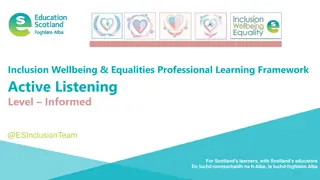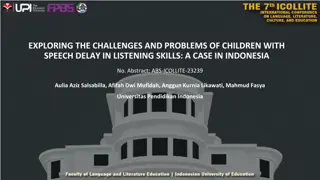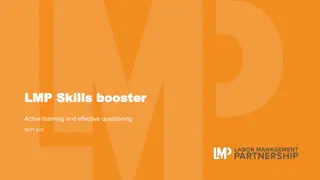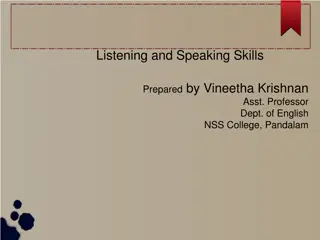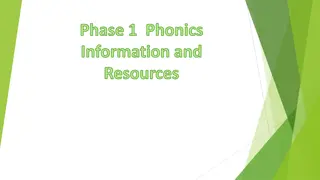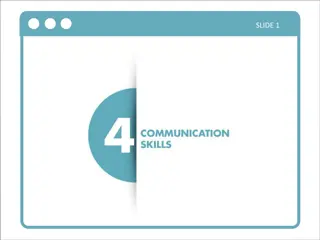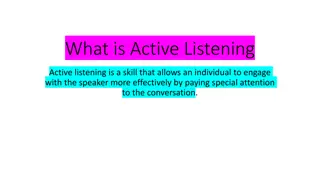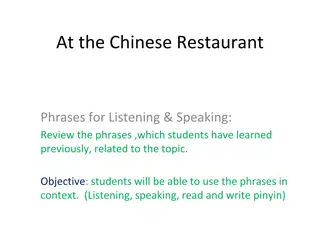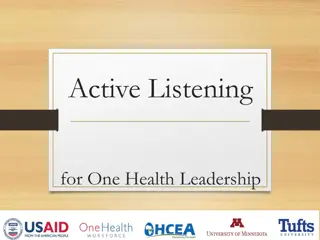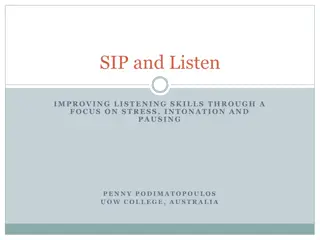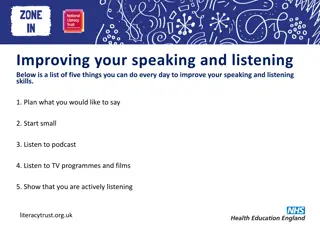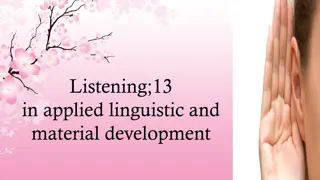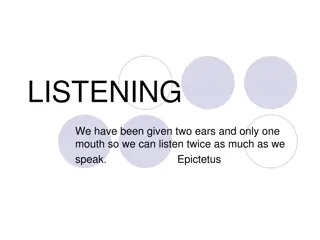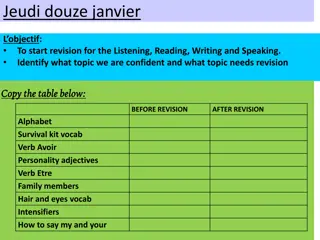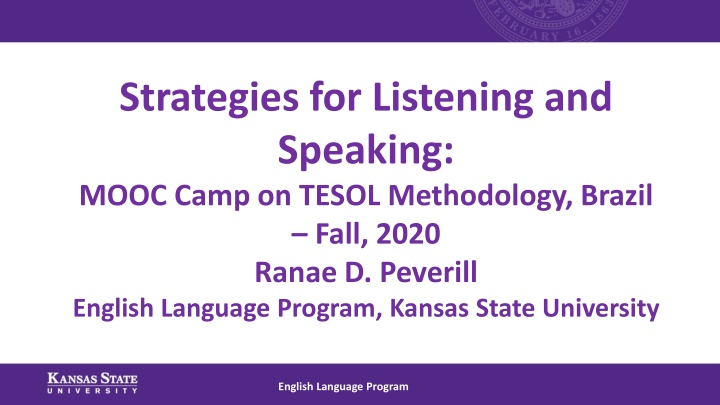
Effective Strategies for ESL Listening and Speaking
Explore effective strategies for ESL listening and speaking, including building vocabulary, using prediction techniques, engaging in various listening tasks, and implementing low-tech/no-tech listening activities to enhance language learning. Discover the value of listening and how it contributes to language acquisition.
Uploaded on | 1 Views
Download Presentation

Please find below an Image/Link to download the presentation.
The content on the website is provided AS IS for your information and personal use only. It may not be sold, licensed, or shared on other websites without obtaining consent from the author. If you encounter any issues during the download, it is possible that the publisher has removed the file from their server.
You are allowed to download the files provided on this website for personal or commercial use, subject to the condition that they are used lawfully. All files are the property of their respective owners.
The content on the website is provided AS IS for your information and personal use only. It may not be sold, licensed, or shared on other websites without obtaining consent from the author.
E N D
Presentation Transcript
Strategies for Listening and Speaking: MOOC Camp on TESOL Methodology, Brazil Fall, 2020 Ranae D. Peverill English Language Program, Kansas State University English Language Program
You What do you listen to in English? You are the best role model for your students. English Language Program
Listening Strategies Listening filters Value of listening for language learning Building vocabulary Using prediction Listening Tasks Low-tech/no-tech listening activities Extensive listening can lead to better production English Language Program
Listening Filters Culture Language Values Beliefs Attitudes Expectations Intentions and motives English Language Program
The Value of Listening English Language Program
Build Vocabulary How can we build vocabulary? Read, read, read! Use all your senses Create a need For listening the sound of the word is important Two Misled English Language Program
Use Prediction How can we help students predict what they will hear? Setting Topic-what do we already know? People and their relationships Visuals ? English Language Program
Listening Tasks Gist-Main idea Summarize Intonation Questions? Statements Emotions! Specifics: Numbers Words or short phrases Order of ideas Lists, sequences English Language Program
Low-tech/No-tech Listening Activities Read aloud Read and listen along Tell a story for the class Pair conversations for the class English Language Program
Extensive Listening To improve listening skills you need to listen A LOT! What opportunities can we provide to our students? English Language Program
Assessment Type of assessment depends on what you are testing: Information? Comprehension questions Gist? Summarizing, paraphrasing Specific vocabulary or word forms? Cloze English Language Program
Strategies for Better Speaking Listening leads to production Read aloud - word formation, sound, fluency Create a need Encourage motivation Be a role model English Language Program
References Harmer, J. (2015). The practice of english language teaching. Edimburgh: Pearson Education Limited. All graphics from Creative Commons Non-Native English Teachers? Braine, G. (2018). Journal list menu. Retrieved October 23, 2020, from https://doi.org/10.1002/9781405198431.wbeal0871.pub2 ELT Journal, Volume 46, Issue 4, October 1992, Pages 340 349, https://doi.org/10.1093/elt/46.4.340 English Language Program

